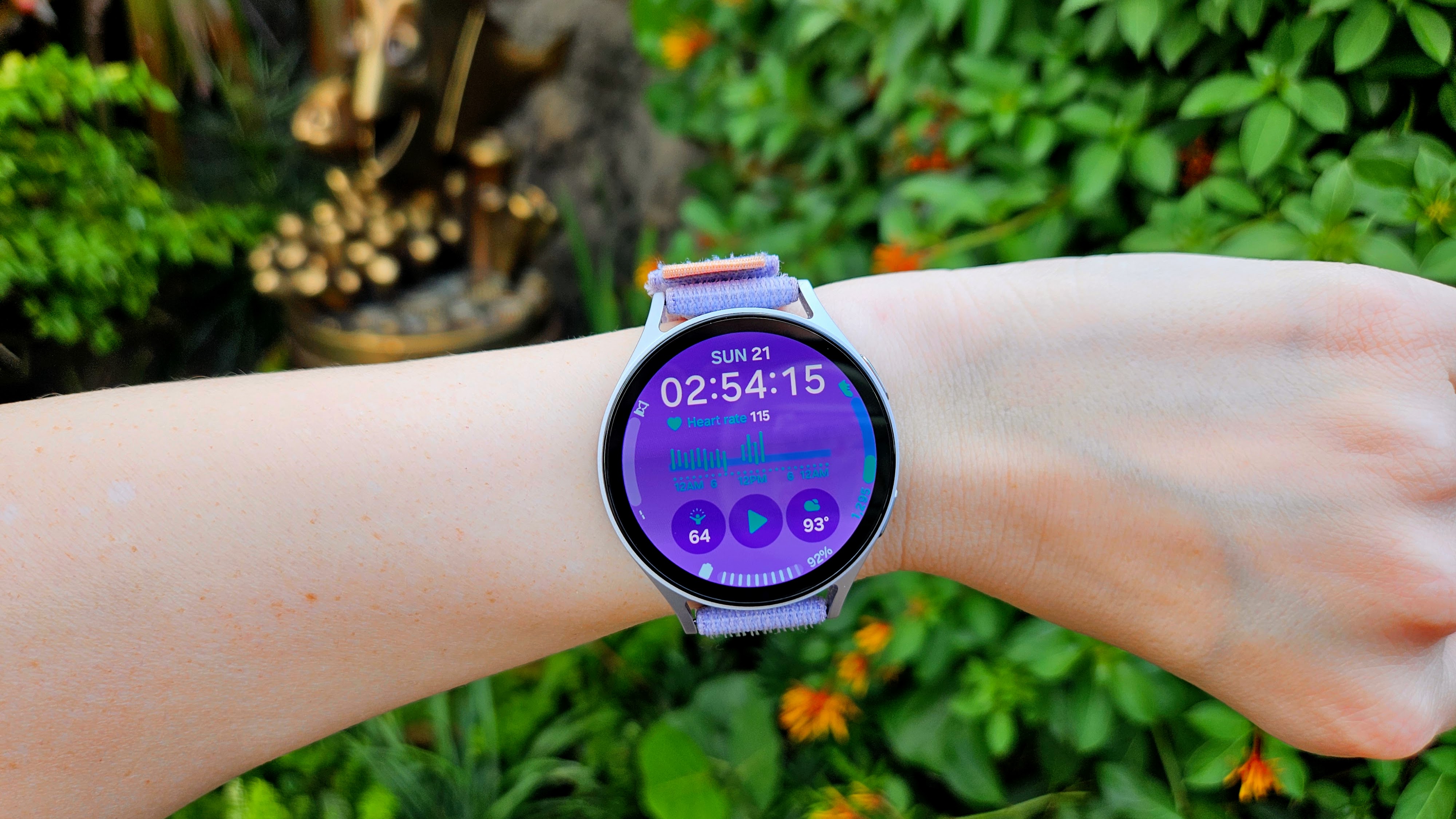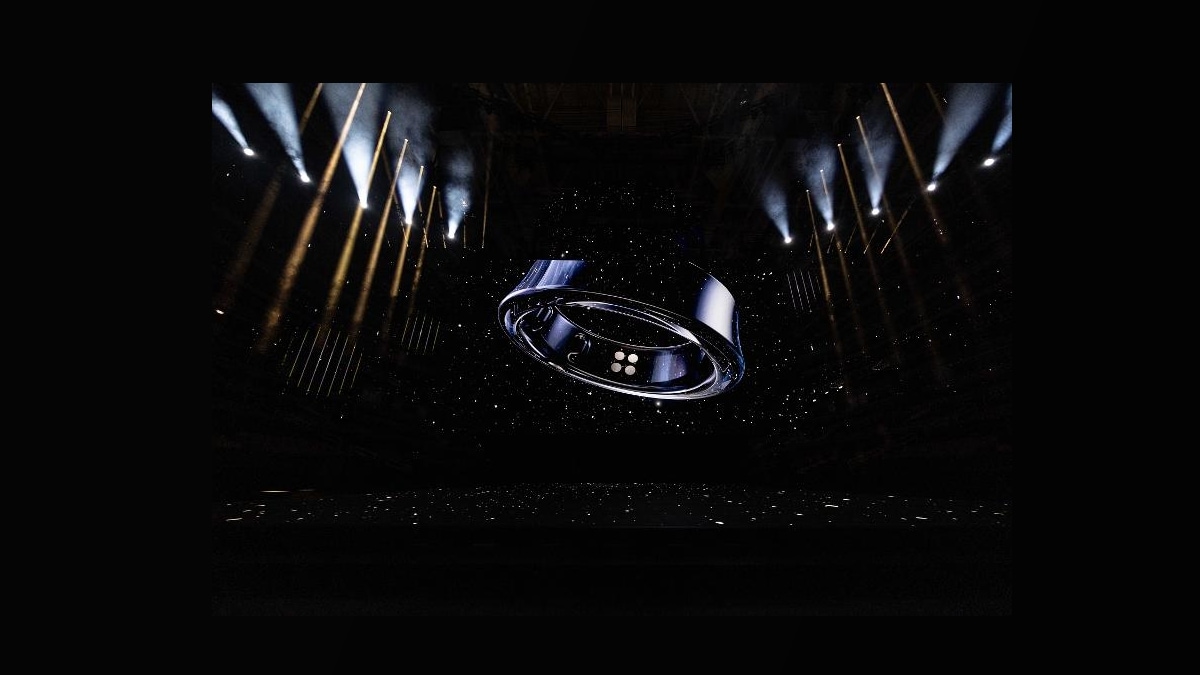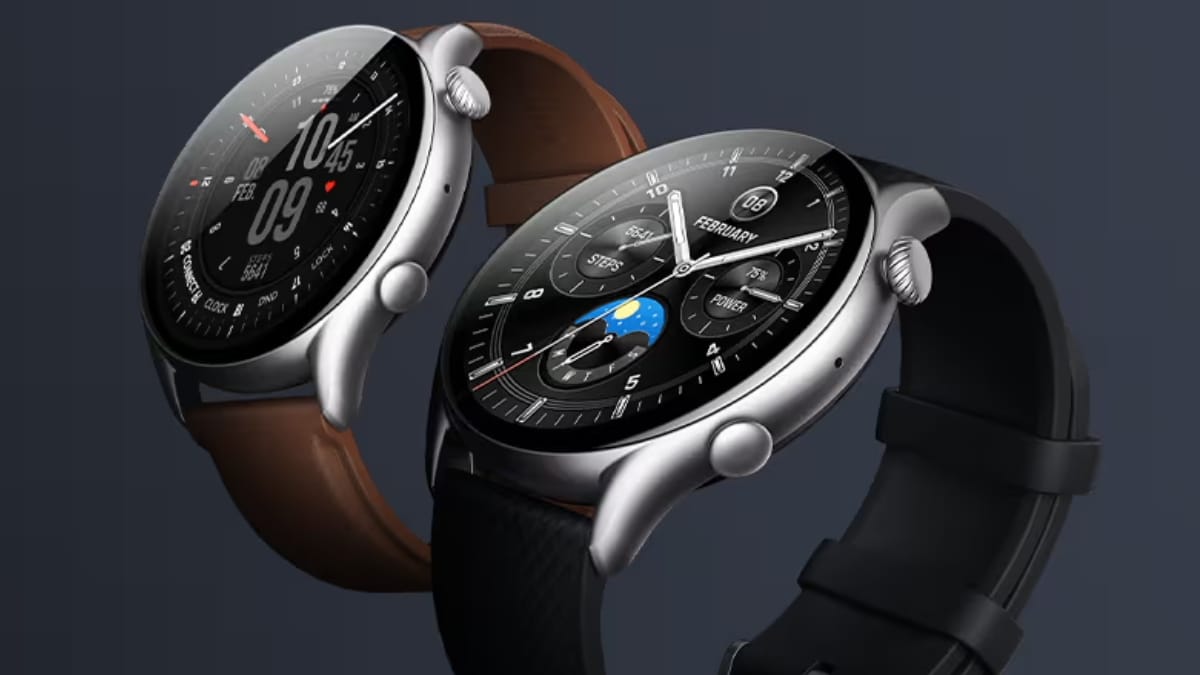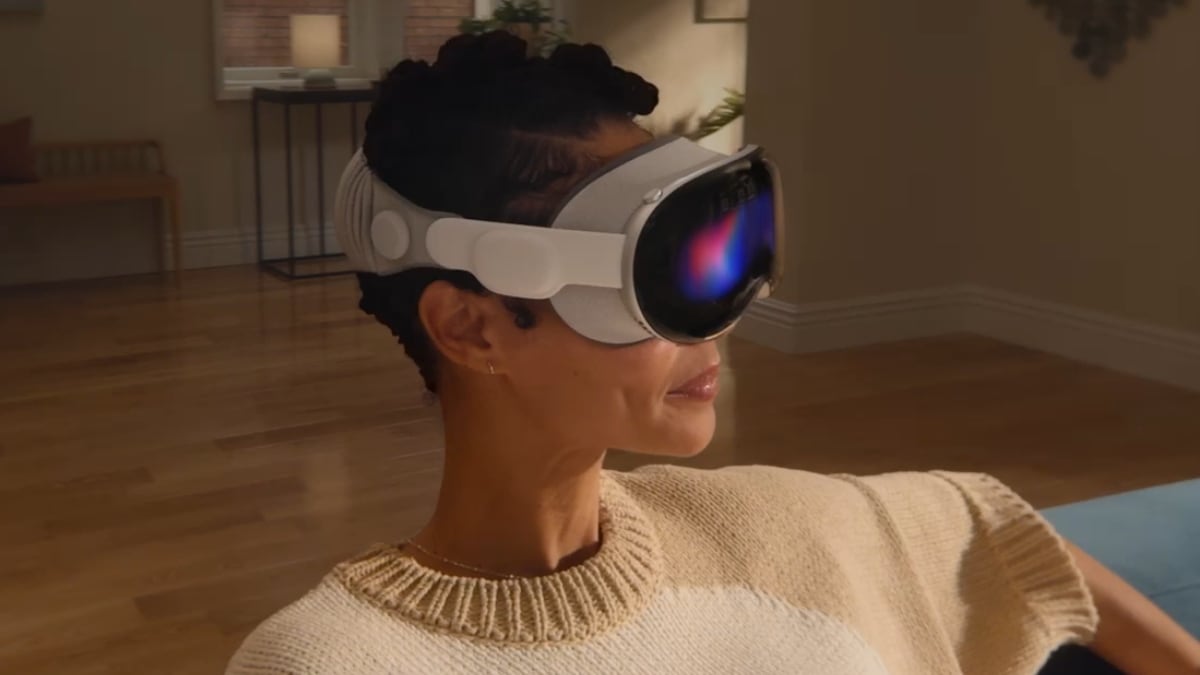
Superb value for money
The OnePlus Watch 2R features powerful hardware, a classy yet modern design, and a unique dual-OS approach that gives it an unmatched battery life, complete with super-fast charging.
For
- Unbeatable battery life
- Workout tracking works great
- Affordable price tag
Against
- No 4G/LTE connectivity
- Available in just one size
Has everything you want
The Samsung Galaxy Watch 7 is a fully loaded smartwatch that sports the newest version of Wear OS enhanced by AI, all kinds of improved sensors, and fuss-free untethered connectivity.
For
- Available in two sizes
- More accurate sensors
- Optional 4G/LTE connectivity
Against
- No rotating bezel for navigation
- No Wireless PowerShare
If you’re planning to get a new smartwatch soon, it only makes sense to compare the OnePlus Watch 2R vs. Samsung Galaxy Watch 7, which are hands-down two of the finest wearables available in the market right now. Both are recent launches, with the former sitting next to the awesome OnePlus Watch 2, and the latter sitting alongside the uber-premium Galaxy Watch Ultra.
Offering powerful hardware, great software, and the ability to track a wide range of health and fitness parameters, the Samsung Galaxy Watch 7 and the OnePlus Watch 2R have a lot going for them. The two are priced (fairly) reasonably too, but which one really deserves the moolah? Let’s find out!
OnePlus Watch 2R vs. Samsung Galaxy Watch 7: Design, hardware, and display
Both the Galaxy Watch 7 and the OnePlus Watch 2R do a solid job of replicating the look and feel of traditional wristwatches, thanks to their circular cases made from aluminum. The two smartwatches also support standard (albeit different-sized) straps, so you shouldn’t have any issues finding one that suits your style. However, while the Galaxy Watch 7 lets you choose between two (40mm and 44mm) sizes, the OnePlus Watch 2R only comes in one (46mm) size. Both wearables have an IP68 rating and are water-resistant up to 5ATM, but only the Galaxy Watch 7 is compliant with the MIL-STD-810H standard, which makes it a bit more rugged than the OnePlus Watch 2R.
While the Galaxy Watch 7 is powered by a 3nm Exynos W1000 SoC, the OnePlus Watch 2R is driven by a 4nm Snapdragon W5 Gen 1 chipset, and you also get 2GB of RAM and 32GB of eMMC storage with each. If these specifications look familiar, it’s because they’re exactly the same as what you’d find if you were to take a look at our Samsung Galaxy Watch Ultra vs. OnePlus Watch 2 comparison. The Galaxy Watch 7 does have a slightly more efficient processor, but the OnePlus Watch 2R also comes with a secondary BES2700BP processor for less resource-intensive activities like step tracking and notification alerts.
The Galaxy Watch 7 is available in two display sizes — 1.3-inch and 1.5-inch — with both having Sapphire Crystal protection. On the other hand, the OnePlus Watch 2R comes with just one display size — 1.43-inch — which is shielded with Gorilla Glass. Nonetheless, the screens on both wearables are incredible touch-enabled AMOLED panels having deep blacks, rich contrast levels, and super-high pixel density. The two smartwatches also get identical physical controls — a pair of tactile buttons that can be customized to perform a variety of functions — located on the right edge.
Swipe to scroll horizontally
| Header Cell – Column 0 | OnePlus Watch 2R | Samsung Galaxy Watch 7 |
|---|---|---|
| Dimensions | 47.6 x 46.6 x 12.1 mm | 40mm: 40.4 x 40.4 x 9.7 mm | 44mm: 44.4 x 44.4 x 9.7 mm |
| Display | 1.43-inch AMOLED, 466×466 pixels resolution | 40mm: 1.3-inch Super AMOLED, 432×432 pixels resolution | 44mm: 1.5-inch Super AMOLED, 480×480 pixels resolution |
| Durability & Case Material(s) | Aluminum Alloy & Gorilla Glass, 5ATM water resistance, IP68 rating | Armor Aluminum & Sapphire Crystal, 5ATM water resistance, IP68 rating & MIL-STD-810H certification |
| Weight (Module Only) | 37g | 40mm: 28.8g | 44mm: 33.8g |
| Chipset / SoC | Snapdragon W5 Gen 1 | Exynos W1000 |
| RAM & Storage | 2GB & 32GB / 4GB (for RTOS) | 2GB & 32GB |
| Navigation & Physical Controls | Touchscreen & Two buttons | Touchscreen & Two buttons |
| Sensors | Accelerometer, Gyroscope, Optical Heart Rate Sensor, Geomagnetic Sensor, Light Sensor, and Barometer | Optical Bio-Signal Sensor, Electrical Heart Signal Sensor, Bioelectrical Impedance Analysis Sensor, Temperature Sensor, Accelerometer, Barometer, Gyro Sensor, Geomagnetic Sensor, and Light Sensor |
| Wireless Connectivity | Wi-Fi (dual-band), Bluetooth 5.0, GPS (dual-band), and NFC | Wi-Fi (dual-band), Bluetooth 5.3, LTE (optional), GPS (dual-band), and NFC |
| Battery & Charging | 500mAh | fast charging | 40mm: 300mAh, 44mm: 425mAh | fast charging |
| OS / Platform | Wear OS 4 & RTOS / Android 8 or above | Wear OS 5 / Android 11 or above |
OnePlus Watch 2R vs. Samsung Galaxy Watch 7: Health and fitness features
Both smartwatches are no slouch when it comes to keeping tabs on your activity and personal wellness metrics, having a variety of sensors to help you do just that. As far as essentials like heart rate, sleep quality, and stress levels are concerned, the two wearables fare equally well. However, the Galaxy Watch 7 comes with an upgraded ‘BioActive’ sensor that not only allows for improved accuracy, but also helps in monitoring your metabolic health. Female users will also appreciate the menstrual cycle tracking feature, which is something the OnePlus 2R doesn’t have.
As Android Central’s Ara Wagoner found in her review, the majority of these features work great. What’s not so great is that many of them are exclusive to Galaxy phones.
The OnePlus Watch 2R and the Galaxy Watch 7 definitely seem like they can give the best fitness smartwatches a run for their money. Both wearables can automatically detect and log a number of workouts and provide detailed information (e.g., average speed, distance travelled) about the wearer’s overall performance when playing a variety of sports. The two smartwatches also have dual-frequency GPS that should help you in tracking your outdoor running sessions with even better accuracy.
OnePlus Watch 2R vs. Samsung Galaxy Watch 7: Software, battery life, and other features
The Galaxy Watch 7 is among the first smartwatches to run Wear OS 5 out of the box. While the latest version of Google’s wearable-centric software platform is largely focused on under-the-hood enhancements, Samsung’s One UI 6 Watch overlay brings several interesting features. Arguably the most notable of these is Galaxy AI, which analyzes the health and fitness data collected by the smartwatch and turns it into actionable insights. Not just that, Galaxy AI also enables things like suggested replies and voice-to-text summaries.
The OnePlus Watch 2R does come with Wear OS 4, but the platform works in conjunction with a proprietary version of RTOS (Real Time Operating System) to manage basic functions like notifications.
As noted by Android Central’s Michael Hicks in his review, this dual-OS architecture allows the wearable to go for up to three days with the battery completely juiced up. Speaking of which, the OnePlus Watch 2R has a large 500mAh battery with super-fast wired charging. In comparison, the Galaxy Watch 7 does have smaller 300mAh (40mm) and 425mAh (44mm) batteries, but you do get fast wireless charging.
Talking about connectivity, both smartwatches include basics like dual-band Wi-Fi, Bluetooth, and NFC for contactless payments. That said, only the Galaxy Watch 7 is offered with (optional) 4G/LTE. That makes the OnePlus Watch 2R a no-go for proper untethered calling, even though it’s not that big of a deal as you might think.
OnePlus Watch 2R vs. Samsung Galaxy Watch 7: Which should you buy?
If there’s one thing that’s clear, it’s that the OnePlus Watch 2R and the Galaxy Watch 7 are among the best Wear OS watches currently available in the market. They’re well-built, have stunning displays, and do just about everything you’d expect from a modern wearable without issues. Sure, the Galaxy Watch 7 does have a MIL-STD-810H certification for added durability, but the OnePlus Watch 2R features phenomenal battery life with its dual-engine architecture. Just like any other product, both have their own sets of pros and cons. But the question is, which one should you spend your money on?
The OnePlus Watch 2R is priced at $229.99, which is a very reasonable price for what it offers. On the other hand, the Galaxy Watch 7 will cost you $299.99 or $329.99, depending on the size you go for. The extra $70-100 is not a small amount, but you do get features like better software support and menstrual tracking. However, if you want 4G/LTE connectivity, you’ll have to spend $349.99 or $379.99 for the cellular version of the Galaxy Watch 7. That’s $120-150 over the OnePlus Watch 2R, which is only offered with Wi-Fi/Bluetooth connectivity.
So, here’s the thing! If all you want is a well-rounded smartwatch that can perform the usual core functions (e.g., health and fitness tracking, managing notifications from a paired smartphone) admirably, either of these two wearables should fit your requirements (and wrists) just fine. Go for the OnePlus Watch 2R if you’re on a budget and value battery endurance over anything else. Conversely, get the Galaxy Watch 7 if money is no object and untethered calls are a must-have for you.
All the essentials
The OnePlus Watch 2R is a well-rounded wearable that excels at the basics. You also get an innovative dual-engine architecture that allows the battery to go up to three days on a full charge.
Packed with features
The Samsung Galaxy Watch 7 is powered by a new and efficient processor, runs the latest AI-enhanced software, and is capable of tracking a plethora of health & fitness parameters with ease.




